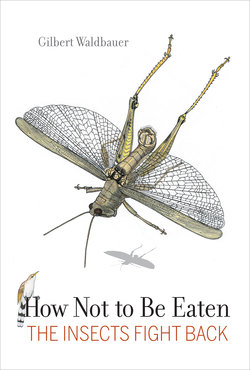How Not to Be Eaten

Реклама. ООО «ЛитРес», ИНН: 7719571260.
Оглавление
Dr. Gilbert Waldbauer. How Not to Be Eaten
Отрывок из книги
How Not to Be Eaten
The Insects Fight Back
.....
This story began about 155 million years ago with the first known bird, the famous Archaeopteryx, represented by beautiful, complete fossils from a limestone quarry in Bavaria. Archaeopteryx combined avian and reptilian characteristics, which shows—as do more recently discovered feather-bearing dinosaur fossils from China—that the birds are direct descendants of the dinosaurs. During the next 120 million years many species of birds evolved, but relatively few of them were insect eaters. During the Miocene epoch, beginning about 30 million years ago, the rapid evolution of the flowering plants and the hundreds of thousands of insects that exploit them resulted, as Frank Gill noted, in an explosive evolutionary radiation of insectivorous birds, mainly songbirds (order Passeriformes), which today constitute close to six thousand of the almost ten thousand known species of birds.
Most birds include insects in their diet. With few exceptions, most notably pigeons and doves, even the most dedicated vegetarian birds, fruit and seed eaters such as finches, buntings, grosbeaks, and cardinals, feed their nestlings a high-protein diet of animal matter, mainly insects. The behavior of a cardinal observed by Josselyn van Tyne is illustrative: “At noon on May 24 the adult male, on his way back to the nest territory, stopped at my feeding shelf with his beak full of small green worms [caterpillars] such as I had often fed to the young. He immediately put the worms down on the shelf and began cracking and eating sunflower seeds…. He then picked up the worms, flew across the street, and (presumably) fed the young.”
.....